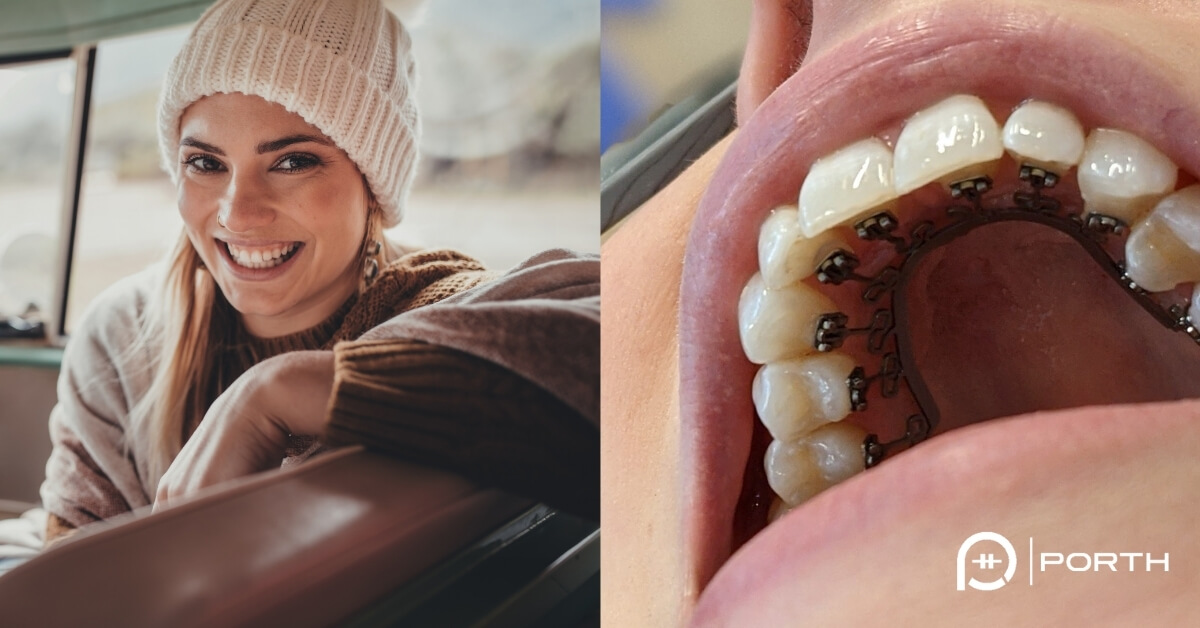Cosmetic orthodontic treatment offers unique opportunity for teens and adults to seek treatment for a confident smile. Traditional braces have been replaced with clear aligners (aka Invisalign) and braces on the back of your teeth – known as lingual braces.
Lingual orthodontics use a modified version of traditional metal braces that are attached behind your teeth. Limited number of orthodontists provide this special appliances. In contrast to conventional braces, lingual braces are truly hidden.
Are you a good candidate for lingual braces?
Lingual braces are extremely efficient appliances that can delivery orthodontic care to a range of patients with simple to complex treatment needs. You have to identify orthodontists that provide this appliance and consult with the orthodontist regarding your needs. Make sure to ask why lingual braces could be a better choice for you.
What is the cost of lingual braces compared to other invisible options?
Lingual braces are highly technical appliances that very limited number of orthodontists offer. You might come across incognito, Suresmile, InBrace, BRIUS, and some other lingual systems. Majority of these lingual orthodontics system allows the provider to deliver exceptional care. Lingual Braces cost $5000-$13000 depending the complexity of the malocclusion (crookedness).
What are the differences between Invisalign and lingual braces?
Clear aligners or Invisalign is a type of partially invisible braces option. Plastic aligners are fairly clear and are hard to identify on your teeth. The major difference between lingual orthodontics and clear aligners is that the fixed braces are glued to the back of the teeth and you only have to make sure to clean them and not break them. In contrast, wearing aligners round the clock (22 hours) is a commitment especially if your treatment time is over a year of care.
Will lingual braces give me a lisp?
Most appliances fixed or removable start with a slight lisp. Lingual braces similar to clear aligners can give you a lisp. The key to overcome the lisp is not to think too much about the braces and allow the tongue and check muscles adapt to the unfamiliar object in your mouth.
Are lingual braces more uncomfortable compare to other braces?
The first few weeks of orthodontic treatment with any appliances is uncomfortable. You have to get used to the appliance and the initial pain associated with moving teeth. The discomfort of moving teeth is the same for braces in front of the teeth or braces behind the teeth even for removable clear aligners. Tooth movement triggers a series of inflammatory events which comes with pain.
Lingual braces compared to other orthodontic appliances in average has a longer adjustment phase. Some patient get used to it in a week some in 2 months. Great oral hygiene and flossing helps with this.
What are the pros and cons of lingual braces?
With most orthodontists, you will be presented with multiple treatment options at your consultation. The treatment plan and treatment time depends on the complexity of your orthodontic needs. Lingual braces can be one of the treatment options for you.
Advantages
Truly invisible braces
Correct complex problems like deep overbites more efficiently
Customized for each patient which comes with increase treatment time efficiency
Disadvantages
4-6 weeks of discomfort while adjusting to the lingual appliances
More expensive orthodontic option
Temporary lisp
